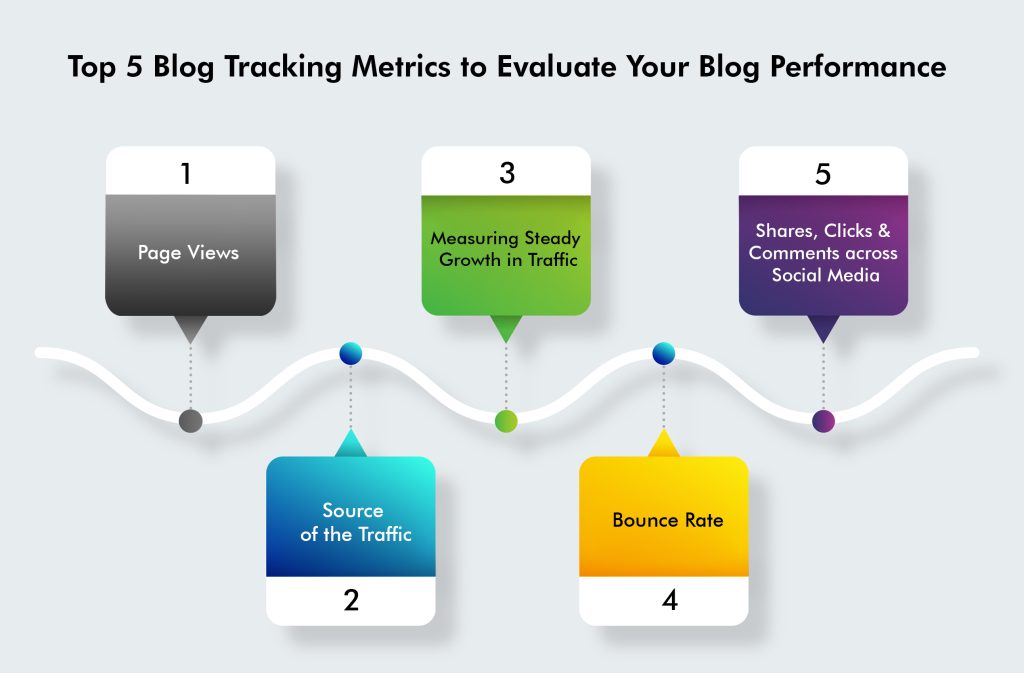Creating a blog is never enough. You need to consistently measure your blog’s performance to ensure its performance is up to the mark. Analyzing the blog provides you with insights into whether your post is liked by the users or if you need to make some changes to make it engaging and interesting for your target audience. In this post, we will cover how you can measure your blog performance.
Page Contents:
Metrics to measure your blog performance
With millions of blogs on the internet, there is severe competition in the blogging sphere. You need to make your blog stand out from the rest and can be achieved with regular tracking and monitoring. The best ways to measure your blog performance are described as follows.
Source of traffic
Understanding where most of your blog traffic comes from is crucial, whether it is social media, referrals, organic search, or other sources. This gives you a clear picture of where you need to focus more. For example, if you see a lot of traffic from social networking platforms, you must spend significant time advertising on social media channels.
The two most important metrics to track at this stage are page views and unique visitors. The page views metric is the total number of times your blog page has been viewed and the unique visitors metric refers to the individuals who have visited your blog.
Click-through rate
The percentage of clicks received on your blog post is called as click-through rate. For example, if we count for every 100 people, 2 people click on your blog page, and the click-through rate of the blog post is 2%. Visit Google Analytics, and select Acquisition, Search Console, and Landing Pages to view the click-through rate of the post.
Social media metrics
Social media helps you expand your blog outreach and connect with new customers. Tracking social media metrics gives you information on how your content is performing. You can begin by evaluating the popular posts on your social websites that get the most shares and views. Also, viewing the comments and likes statistics gives you an idea of the content pattern that is mostly liked by your audience.
Analyzing SEO metrics
This gives you information about the keywords for which you are ranking that helps you select the right keywords to rank on search engine results. It also provides insights into the traffic you get from organic searches. This data enables you to understand what steps you need to take to increase the traffic on your blog and improve SEO.
The bounce rate of the blog
It refers to the percentage of visitors who leave the site after just viewing a single page of the blog. A high bounce rate means that your blog is not engaging for the readers or the blog pages are not accessible. Another alarming thing is when your site’s bounce rate is higher than the blog’s average traffic; you need to make certain changes to improve your blog content and design.
A/B testing
Another way to measure the performance of your blog is by A/B testing metric. A/B testing compares two versions to check which one performs better. For example, you can write two headlines to evaluate which gets more clicks. You can choose among several free and paid A/B testing tools available online.
Time spent on page
Evaluating the amount of time people spend on your blog page helps you determine the blog’s performance. If people spend considerable time on your blog, it is a positive sign that your blog is liked and appreciated by the users. On the other hand, if people spend less time on your blog, it is a signal that the blog is not well-received by the audience.
Subscriber count
The best way to increase your subscriber base and establish authority is by generating newsletter subscribers. This helps you be in touch with your customers regularly and increase your engagement rate. One of the ways to start building subscribers is using tools such as Mail Chimp that enable you to view which post generates the most subscribers.
Analyzing the above metrics gives you useful insights into which posts perform well and which require improvement. Measuring blog performance helps you add more value to the target customer group, leading to more traffic, more clicks, and higher revenue.
